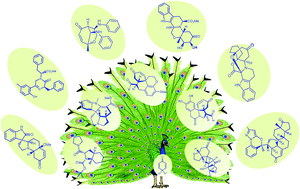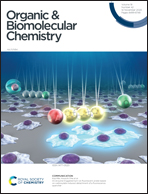Stereocontrolled transformations of cyclohexadienone derivatives to access stereochemically rich and natural product-inspired architectures
Abstract
The last two decades or so have witnessed an upsurge in defining the art of designing complex natural products and nature-inspired molecules. Throughout these decades, fundamental insights into stereocontrolled, step-economic and atom-economical synthesis principles were achieved by the numerous synthetic accomplishments particularly in diversity-oriented synthesis (DOS). This has empowered the visualization of the third dimension in synthetic design and thus has resulted in a dramatic increase with today's diversity-oriented synthesis (DOS) at the forefront enabling access to diverse scaffolds with a high degree of stereochemical and skeletal complexity. To this end, a starting material-based approach is one of the powerful tools utilized in DOS that allows rapid access to molecular architectures with a high sp3 content. Skeletal and stereochemical diversity is often paramount for the selective modulation of the biological function of a complementary protein in the biological space. In this context, stereocontrolled transformation of cyclohexadienone scaffolds has positioned itself as a powerful platform for the rapid generation of stereochemically enriched and natural product-inspired compound collections. In this review, we cover multidirectional synthetic strategies that utilized cyclohexadienone derivatives as pluripotent building blocks en route for the construction of novel chemical space.

- This article is part of the themed collection: Synthetic methodology in OBC


 Please wait while we load your content...
Please wait while we load your content...